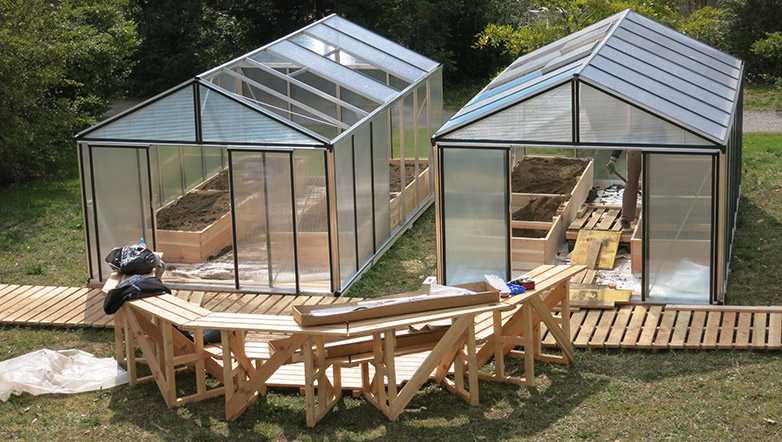Storytelling about climate change at the “Klimagarten 2085”
Climate change has been communicated as a global concern affecting all of mankind; but this message doesn’t seem to be getting through. If indeed the human brain responds better to experience than to analysis, then climate change must be told as a local and personal story – just as the Klimagarten 2085 exhibition is doing.
A study on public understanding of an IPCC (Intergovernmental Panel on Climate Change) graph [1] caught my interest recently. Interviews were conducted with forty politicians, communication experts and academics, and three climate scientists. The results showed that the lay respondents were confused by the meaning of the graph and the term “uncertainty”; only the climate scientists understood it correctly (for more information see [2]).
Simplicity beats complexity
This confusion about what is uncertain and what not determines how narratives are framed in public discourse. Richard Matthew investigates universal versus particular narratives. [3] He asserts that a simple, but intense universal story, such as genocide or torture, can make an impact on a particular community even if they are not directly affected by it.
The dominant climate change narrative, however, tells a highly complex universal story – which is the narrative form least likely to succeed. While the human factor in climate change is certain, the extent of its effect and impact across the planet is uncertain. So although the climate change story should be universal and intense, prompting moral outrage and action, it is instead complex and contested, and finds no place in local dialogue.
Best practice insights from psychology
So what type of message will inform better dialogue and effect behavioural change? Climate scientists and communication projects such as the Yale Project on Climate Change Communication [4] advise policymakers to turn to psychology for insights. A recently published paper advocates five best practices [5]:
- emphasize climate change as a present, local, and personal risk;
- facilitate more affective and experiential engagement;
- leverage relevant social group norms;
- frame policy solutions in terms of what can be gained from immediate action;
- and appeal to intrinsically valued long-term environmental goals and outcomes
Two ways of processing
Climate issues are often presented in a format which assumes that lay people process uncertain information in a logical, analytical manner. Yet psychologists have shown that the human brain uses two different processing systems. The first is intuitive, experiential, emotional and fast. The second is deliberative, analytical, rational and slow. We constantly make judgments using these systems in parallel, but when they diverge the first system dominates. In other words, how we feel about something has a stronger influence on how we respond. Therefore, to be effective, information about climate change risks must be translated into ‘relatable and concrete personal experiences’. [5]
Perceiving change in a garden
We therefore decided to invite the public to personally experience future climate scenarios and their effect on agricultural plants and our landscape and forests. In collaboration with the Botanical Garden of the University of Zurich, the Zurich-Basel Plant Science Center is initiating a public art-science experiment, Klimagarten 2085, which offers an opportunity for social learning and shows the impact of climate change at a human and local level.
Two climate scenarios will be created in greenhouses in the Old Botanical Garden in Zurich [6], at temperatures of +2 and +4°C above the current annual summer temperatures. Plants that flourish in northern Switzerland will be grown both in the greenhouses and outside, to enable comparisons between what we currently grow and eat, and what may happen in the future. Visitors can participate by taking measurements of drought and heat-stressed plants. Accompanying the installation is a program of workshops for families and school groups, art performances, and talks by botanists, ecologists, plant scientists and geographers from ETH Zurich and the Universities of Zurich and Basel.
We hope by telling a local story about the future climate of Zurich, the Klimagarten will engage and inspire people to think differently about global (and local) warming.
Further information
[1] The externe Seite IPCC Graph discussed
[2] The results showed that the lay respondents were unable to identify the two different types of uncertainty in the IPCC graph without substantial assistance. Only the three climate scientists understood that the uncertainties in the scenario (grey areas in bars on the right) were due to the unpredictability of humans and not due to scientific uncertainty in the models.
McMahon, R, & Stauffacher, M & Knutti, R 2015, ‘The unseen uncertainties in climate change: reviewing comprehension of an IPCC scenario graph’, Climatic Change 133:141–154 doi:10.1007/s10584-015-1473-4
[3] Matthew, R 2013, ‘Space Time and Scales of Human Security in Climate Change’ in Handbook on Climate Change and Human Security, Redclift, M & Grasso, M, (eds.) Edward Elgar Publishing
[4] Yale Project on Climate Change Communication: externe Seite Link
[5] van der Linden, S, Maibach, E & Leiserowitz, A 2015, ‘Improving Public Engagement With Climate Change: Five “Best Practice” Insights From Psychological Science’, Perspectives on Psychological Science, Vol. 10(6) 758–763 DOI (p. 759)
[6] Alter botanischer Garten der Universität Zürich: externe Seite Link




Kommentare
Noch keine Kommentare